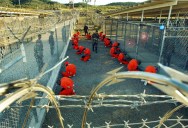This Day In History – January 11th

FOUNDING FATHER, ALEXANDER HAMILTON IS BORN – JANUARY 11, 1757

Alexander Hamilton (January 11, 1757 – July 12, 1804) was a Founding Father, soldier, economist, political philosopher, one of America’s first constitutional lawyers and the first United States Secretary of the Treasury. As Secretary of the Treasury, Hamilton was the primary author of the economic policies of the George Washington Administration, especially the funding of the state debts by the Federal government, the establishment of a national bank, a system of tariffs, and friendly trade relations with Britain.
Hamilton served in the American Revolutionary War. At the start of the war, he organized an artillery company and was chosen as its captain. He later became the senior aide-de-camp and confidant to General George Washington, the American commander-in-chief.
Hamilton resigned from office in 1795 and returned to the practice of law in New York. However, he kept his hand in politics and was a powerful influence on the cabinet of President Adams (1797–1801). Hamilton’s opposition to John Adams helped cause Adams’ defeat in the 1800 elections. When Thomas Jefferson and Aaron Burr tied in the electoral college, Hamilton helped defeat his bitter personal enemy Burr and elect Jefferson as president. In 1804, as the next presidential election approached, Hamilton again opposed the candidacy of Burr. Taking offense at some of Hamilton’s comments, Burr challenged him to a duel and mortally wounded Hamilton, who died within days. [Source]

When Thomas Jefferson and Aaron Burr tied in the electoral college, Hamilton helped defeat his bitter personal enemy Burr and elect Jefferson as president. In 1804, as the next presidential election approached, Hamilton again opposed the candidacy of Burr. Taking offense at some of Hamilton’s comments, Burr challenged him to a duel and mortally wounded Hamilton, who died within days.
CANADA’S FIRST PRIME MINISTER, SIR JOHN A. MACDONALD IS BORN
JANUARY 11, 1815

Sir John Alexander Macdonald, GCB, KCMG, PC, PC (Can), QC (11 January 1815 – 6 June 1891) was the first Prime Minister of Canada. The dominant figure of Canadian Confederation, his political career spanned almost half a century. Macdonald served 19 years as Canadian Prime Minister; only William Lyon Mackenzie King served longer.
When in 1864 no party proved capable of governing for long, Macdonald agreed to a proposal from his political rival, George Brown, that the parties unite in a Great Coalition to seek federation and political reform. Macdonald was the leading figure in the subsequent discussions and conferences, which resulted in the British North America Act and the birth of Canada as a nation on 1 July 1867.
Macdonald was designated as the first Prime Minister of the new nation, and served in that capacity for most of the remainder of his life, losing office for five years in the 1870s over the Pacific Scandal (bribery in the financing of the Canadian Pacific Railway). After regaining his position, he saw the railroad through to completion in 1885, a means of transportation and freight conveyance that helped unite Canada as one nation. Macdonald is credited with creating a Canadian Confederation despite many obstacles, and expanding what was a relatively small colony to cover the northern half of North America. By the time of his death in 1891, Canada had secured most of the territory it occupies today. [Source]
LEONARD THOMPSON, FIRST HUMAN TO BE ADMINISTERED INSULIN FOR DIABETES – JANUARY 11, 1922

Insulin is a hormone produced by the pancreas which is central to regulating carbohydrate and fat metabolism in the body. Insulin causes cells in the liver, muscle, and fat tissue to take up glucose from the blood, storing it as glycogen in the liver and muscle. Insulin stops the use of fat as an energy source by inhibiting the release of glucagon. It is provided within the body in a constant proportion to remove excess glucose from the blood, which otherwise would be toxic.
Insulin is used medically to treat some forms of diabetes mellitus. Patients with Type 1 diabetes mellitus depend on external insulin (most commonly injected subcutaneously) for their survival because the hormone is no longer produced internally.
Leonard Thompson was the first patient to receive injections of pancreatic extract on January 11, 1922. He was 14. The young Toronto resident had been diabetic since 1919. He weighed only 65 pounds and was about to slip into a coma and die. At first he received Dr, F. Banting’s and Dr. Charles Best’s extract. Two weeks later he used the purified extract of Dr. J.B. Collip and Thompson’s symptoms began to disappear; his blood sugar returned to normal and he was brighter and stronger. Thompson lived another 13 years with the insulin. He died at the age of 27 due to diabetes complications.
LANDMARK REPORT ‘SMOKING AND HEALTH’ PUBLISHED BY U.S. SURGEON GENERAL REGARDING NEGATIVE HEALTH EFFECTS OF SMOKING – JANUARY 11, 1964

Surgeon General, Dr. Leonidas Terry, press conference releasing landmark report
Smoking and Health: Report of the Advisory Committee to the Surgeon General of the United States was a landmark report published on January 11, 1964 by the Surgeon General’s Advisory Committee on Smoking and Health, chaired by then-Surgeon General of the United States Luther Terry regarding the negative health effects of smoking.
While not the first such declaration by an official of the United States of America, it is notable for being arguably the most famous, and certainly had lasting and widespread effects on the tobacco industry and on the worldwide perception of smoking.
The report’s conclusions were almost entirely focused on the negative health effects of cigarette smoking. It found cigarette smokers had a seventy percent increased mortality rate, that cigarette smoke was the primary cause of chronic bronchitis, and showed a correlation between smoking, emphysema, and heart disease. In addition, it reported a causative link between smoking and a ten- to twentyfold increase in the occurrence of lung cancer, as well as a positive correlation between pregnant women who smoke and underweight newborns.
Like the World Health Organization during this period, but possibly influenced by the fact that they were themselves smokers, the Committee defined cigarette smoking as a “habituation” rather than an overpowering “addiction.”
The report’s publication had wide effects across the United States and the world. It was deliberately published on a Saturday to minimize the negative effect on the American stock markets, while maximizing the coverage in Sunday newspapers. It led to policy and public opinion changes such as warning labels and restrictions on advertising, large scale anti-smoking campaigns, and questioning from the tobacco industry. [Source]

FIRST PRISONERS ARRIVE AT U.S. MILITARY DETENTION CAMP IN GUANTANAMO BAY, CUBA – JANUARY 11, 2002

The Guantanamo Bay detention camp is an extrajudicial detainment and interrogation facility of the United States located within Guantanamo Bay Naval Base, Cuba. The facility was established in 2002 by the Bush Administration to hold detainees from the war in Afghanistan and later Iraq. It is operated by the Joint Task Force Guantanamo (JTF-GTMO) of the United States government in Guantanamo Bay Naval Base, which is on the shore of Guantánamo Bay.
The detainment areas consist of three camps: Camp Delta (which includes Camp Echo), Camp Iguana, and Camp X-Ray, the last of which has been closed. The facility is often referred to as Guantánamo, G-Bay or Gitmo, after the military abbreviation GTMO for the Guantanamo Bay Naval Base.
After the US Department of Justice advised that the Guantanamo Bay Detention Camp could be considered outside U.S. legal jurisdiction, the first twenty captives arrived at Guantanamo on January 11, 2002 from a plane from Afghanistan.
On January 22, 2009, the White House announced that President Barack Obama had signed an order to suspend the proceedings of the Guantanamo military commission for 120 days and that the detention facility would be shut down within the year. On January 29, 2009, a military judge at Guantanamo rejected the White House request in the case of Abd al-Rahim al-Nashiri, creating an unexpected challenge for the administration as it reviews how America puts Guantanamo detainees on trial. On May 20, 2009, the United States Senate passed an amendment to the Supplemental Appropriations Act of 2009 (H.R. 2346) by a 90-6 vote to block funds needed for the transfer or release of prisoners held at the Guantanamo Bay detention camp.
On January 7, 2011, President Obama signed the 2011 Defense Authorization Bill which contains provisions preventing the transfer of Guantanamo prisoners to the mainland or to other foreign countries, and thus effectively stops the closure of the detention facility. However he strongly objected to the clauses and stated that he would work with Congress to oppose the measures. As of January 2012, 171 detainees remain at Guantanamo. [Source]
SIR EDMUND HILLARY, FIRST PERSON TO CLIMB EVEREST DIES
JANUARY 11, 2008

Sir Edmund Percival Hillary (20 July 1919 – 11 January 2008), was a New Zealand mountaineer, explorer and philanthropist. On 29 May 1953 at the age of 33, he and Nepalese Sherpa mountaineer Tenzing Norgay became the first climbers known to have reached the summit of Mount Everest. He was named by Time magazine as one of the 100 most influential people of the 20th century.
Following his ascent of Everest he devoted much of his life to helping the Sherpa people of Nepal through the Himalayan Trust, which he founded. Through his efforts many schools and hospitals were built in this remote region of Nepal.
In 1992 Hillary appeared on the updated New Zealand $5 note, thus making him the only New Zealander to appear on a banknote during his or her lifetime, in defiance of the established convention for banknotes of using only depictions of deceased individuals, and current heads of state. [Source]

The statue of Sir Edmund Hillary permanently gazing towards New Zealand’s highest peak, Aoraki/Mount Cook. Photograph by Jonathan Keelty
MARK MCGWIRE ADMITS TO STEROID USE WHEN HE BROKE BASEBALL’S HOME RUN RECORD IN 1988 – JANUARY 11, 2010

Mark David McGwire (born October 1, 1963), nicknamed “Big Mac”, is an American former professional baseball player who played his major league career with the Oakland Athletics and the St. Louis Cardinals. For his career, McGwire averaged a home run once every 10.61 at bats, the lowest at bats per home run ratio in baseball history (Babe Ruth is second at 11.76). In 1987, he broke the single-season home run record for rookies, with 49. In 1998, McGwire and Sammy Sosa achieved national fame for their home run-hitting prowess in pursuit of Roger Maris’ single season home run record; McGwire broke the record and hit 70 home runs that year. Barry Bonds now holds the record, after hitting 73 home runs during the 2001 season.
On January 11, 2010, McGwire admitted to using steroids on and off for a decade and said, “I wish I had never touched steroids. It was foolish and it was a mistake. I truly apologize. Looking back, I wish I had never played during the steroid era.” He admitted using them in the 1989/90 offseason and then after he was injured in 1993. He admitted using them on occasion throughout the ’90s, including during the 1998 season. McGwire stated that he used steroids to recover from injuries.
McGwire’s decision to admit using steroids was prompted by his decision to become hitting coach of the St. Louis Cardinals. According to McGwire, he took steroids for health reasons rather than to improve performance. [Source]
Trending on TwistedSifter




